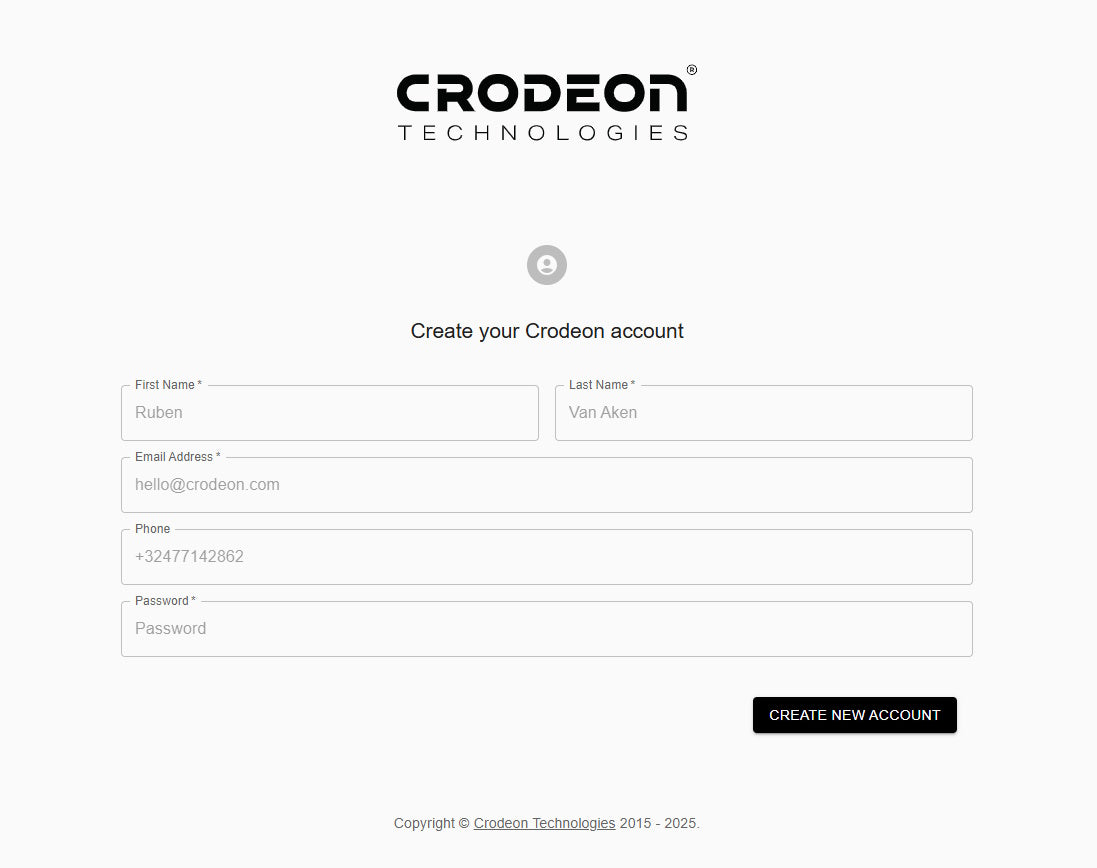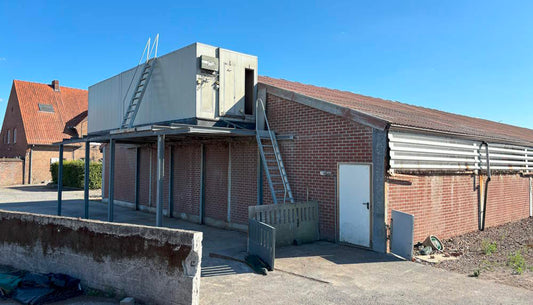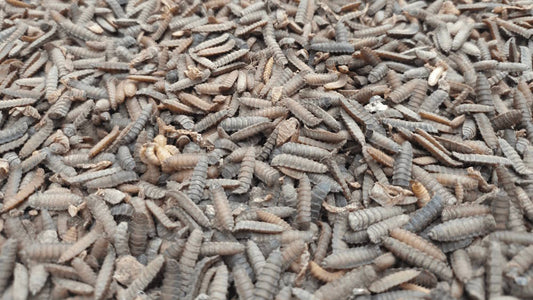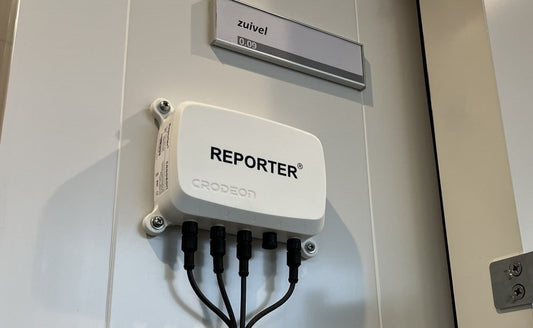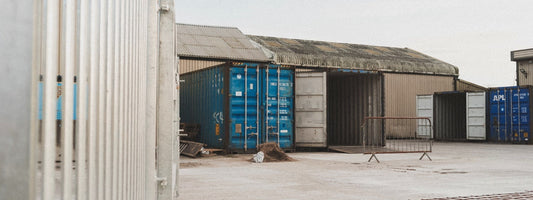Abordez rapidement les 7 principes du HACCP
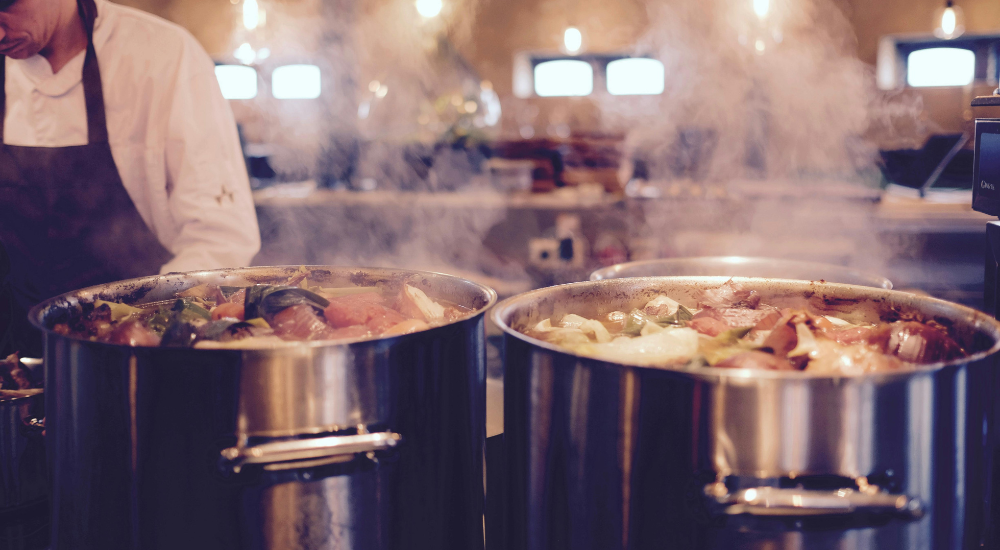
Sur le site de Crodeon, nous parlons déjà de l'HACCP et de l'importance de la sécurité alimentaire. Dans ce blog, nous expliquerons comment la technologie d'aujourd'hui peut vous aider à aborder les 7 principes de l'HACCP. Nous utiliserons notre propre dispositif de capteurs, Reporter®, comme exemple concret de système de surveillance des aliments.
Voici les directives HACCP pour les restaurants et autres installations de production alimentaire, qui aident à sécuriser votre cuisine, votre ligne de production ou votre stockage.
- Principe 1 : Effectuer une analyse des dangers.
- Principe 2 : Déterminer les points de contrôle critiques (CCP).
- Principe 3 : Établir des limites critiques.
- Principe 4 : Mettre en place des procédures de surveillance.
- Principe 5 : Mettre en place des actions correctives.
- Principe 6 : Mettre en place des procédures de vérification.
- Principe 7 : Mettre en place des procédures d'enregistrement et de documentation.
Principe 1 : Effectuer une analyse des dangers (AD)
De quoi s'agit-il ?
Établissez une liste des dangers potentiels et identifiez les personnes dans votre organisation impliquées dans la surveillance des aliments. Classez ces risques en attribuant une note de gravité à chaque danger. Quelques exemples de dangers potentiels incluent la prolifération bactérienne, les emballages contaminés et les températures de stockage des aliments incorrectes.
Comment Reporter® peut-il vous aider ?
Reporter peut vous aider à surveiller la température et à organiser votre équipe. Utilisez le Crodeon Dashboard pour configurer les paramètres d'alarme et déterminer qui doit recevoir la première notification. Si cette personne ne peut pas gérer l'incident, le message peut automatiquement être redirigé à la personne suivante. Après ces étapes, vous pouvez commencer l'identification et l'évaluation des dangers.

Principe 2 : Déterminer les points de contrôle critiques (CCP)
De quoi s'agit-il ?
Après avoir établi la liste des dangers potentiels, la prochaine étape est de déterminer les dangers identifiés qui pourraient compromettre la sécurité et la qualité hygiénique des aliments. Ces dangers doivent être contrôlés, c'est pourquoi ils sont appelés points de contrôle critiques. Pour suivre les directives HACCP pour les restaurants ou autres installations alimentaires, vous devez prêter attention à l'enregistrement des températures. C'est une mesure préventive claire pour ce danger.
Comment Reporter® peut-il vous aider ?
Reporter peut vous aider avec l'enregistrement en ligne des températures en temps réel. Le dispositif dispose de quatre capteurs câblés pouvant être prolongés jusqu'à 30 mètres. Toutes les mesures sont disponibles en temps réel sur votre ordinateur, smartphone ou tablette. Les mesures les plus courantes pour la surveillance alimentaire dans le stockage sont la température, l'humidité et les pannes de courant. Assurez-vous d'installer les capteurs de température à un endroit représentatif de l'ensemble de la pièce, par exemple, loin de la porte ou de l'évaporateur.

Principe 3 : Établir des limites critiques
De quoi s'agit-il ?
Ce principe consiste à déterminer les limites d'acceptabilité ou de non-acceptabilité d'un risque et à fixer des valeurs limites de tolérance pour assurer la sécurité des aliments. Lorsque l'analyse révèle que les dangers ou risques dépassent les seuils critiques, cela signifie qu'il existe un réel risque pour la sécurité des consommateurs. Concernant le stockage des aliments, cela implique de définir une température maximale et minimale de stockage. D'autres exemples courants de limites sont les dates d'expiration, la période de consommation ou la température de cuisson.
Comment Reporter® peut-il vous aider ?
Reporter vous permet de configurer des seuils maximum et minimum via le Crodeon Dashboard. Vous pouvez le faire pour chaque paramètre de capteur et même ajouter un délai si nécessaire. Lorsque la limite critique est dépassée pendant une période plus longue que le délai configuré, la personne responsable sera avertie, vous aidant ainsi dans vos processus de surveillance de la sécurité alimentaire.

Principe 4 : Mettre en place des procédures de surveillance HACCP
De quoi s'agit-il ?
Les procédures de surveillance HACCP peuvent vous aider à prévenir les risques identifiés. Le stockage des aliments nécessite généralement une alarme pour vous aider à garder un œil sur les températures. L'alarme se déclenchera si la température dépasse un certain seuil. Cette mesure est une preuve suffisante que vous avez fait tout votre possible pour contrôler ce point de contrôle critique et suivre les directives HACCP pour les restaurants.
Comment Reporter® peut-il vous aider ?
Surveillez votre chambre froide ou stockage réfrigéré avec un seul Reporter. Vous pouvez visualiser et accéder aux données en temps réel et historiques via votre PC, tablette ou smartphone. Configurez l'intervalle de mesure entre 30 secondes et 2 heures, avec un intervalle recommandé de 5 minutes. Le Crodeon Dashboard vous permet de nommer votre Reporter ainsi que chaque capteur individuel.

Principe 5 : Mettre en place des actions correctives
De quoi s'agit-il ?
Lorsque les processus de surveillance de la sécurité alimentaire révèlent qu'un point de contrôle critique n'est pas respecté, il est essentiel de mettre en place des mesures correctives. Toutes les actions correctives doivent être consignées dans la documentation.
Comment Reporter® peut-il vous aider ?
Grâce au Crodeon Dashboard, vous pouvez gérer la personne responsable de la surveillance HACCP pour chaque zone où un Reporter ou capteur est installé, et où des mesures correctives doivent être mises en œuvre. L'ajout ou la suppression d'utilisateurs sur le Dashboard est aussi simple qu'un toucher sur votre écran. Vous pouvez attribuer un rôle aux nouveaux utilisateurs, leur permettant uniquement de visualiser les données ou de gérer la configuration du système en tant qu'éditeurs ou propriétaires.

Principe 6 : Mettre en place des procédures de vérification
De quoi s'agit-il ?
Pour confirmer l'efficacité des processus de surveillance de la sécurité alimentaire, il est essentiel de mettre en œuvre des mesures de vérification . Par exemple, vous devez vérifier si l'étalonnage du thermomètre qui valide la température de la chambre froide est correct. Assurez-vous que chaque membre de votre personnel est conscient des règles que vous appliquez pour la surveillance HACCP.
Comment Reporter® peut-il vous aider ?
Le Crodeon Dashboard vous permet de gérer le processus de vérification de vos dépassements. Chaque dépassement est stocké dans le cloud avec son horodatage. Vous pouvez toujours vérifier la durée d'un dépassement et qui a confirmé la réception de la notification d'alarme.

Principe 7 : Mettre en place des procédures d'enregistrement et de documentation
De quoi s'agit-il ?
Les différentes procédures, méthodes et enregistrements créés dans le cadre des directives HACCP pour les restaurants et la mise en œuvre de l'HACCP doivent être archivés afin qu'ils puissent être consultés par les autorités en cas d'inspection. Pour que le système de surveillance des aliments soit mis en œuvre efficacement, il est essentiel que tout le personnel de restauration soit formé aux 7 principes de l'HACCP.
Comment Reporter® peut-il vous aider ?
Grâce au Crodeon Dashboard, les données de mesure historiques sont automatiquement stockées dans le cloud. À tout moment, vous pouvez télécharger vos données de mesure sous forme de fichier csv, afin de les analyser à l'aide d'Excel ou de tout autre outil de feuille de calcul. Dans l'onglet Dépassements, vous pouvez également consulter la liste de tous les dépassements de température, indiquant les heures et la durée pendant lesquelles la température a dépassé les seuils configurés.

Contactez-nous si vous avez des questions sur l'enregistrement en ligne des températures pour les 7 principes de l'HACCP. Visitez notre boutique pour en savoir plus sur Reporter® et nos capteurs. Consultez également ces 6 listes HACCP.


